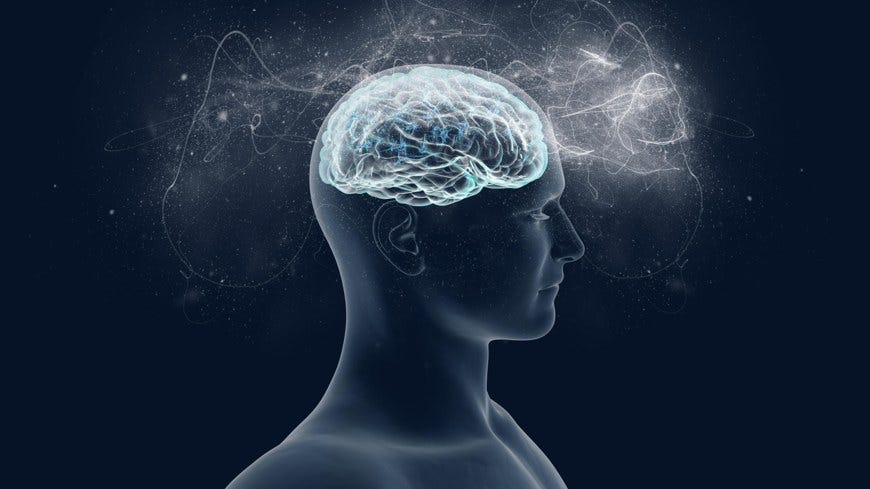Comments
- No comments found

There is a new paper in Cerebral Cortex, In Vivo Ephaptic Coupling Allows Memory Network Formation, where the authors 'predicted that the brain's electric fields guide neurons to produce memories'.
They stated that, "Anatomical connectivity alone cannot be the whole story. Hypotheses that could explain this include that engram complexes are dynamically formed by emergent properties of neurons like synchronized rhythms, possibly resulting from internal coordination of spike timing, that allow neuronal communication, feature integration and perceptual segmentation. Here, we report tests of the hypothesis that the electric fields generated by neurons play a crucial role. We suggest that ephaptic coupling ties together the areas that participate in engram complexes. In other words, we test the hypothesis that memory networks include electric fields that carry information back to individual neurons."
"Neurons give rise to the ensemble and an emerging electric field. This, in turn, determines the function of each neuron through ephaptic coupling. Synaptic activity is not dictated solely by electrical elements, the receptors, charged particles, and currents, but also chemical elements, like scaffold proteins. Both electrical and chemical elements determine the electric field in the extracellular space"
"The idea that electrical fields play a role in the formation of neural ensembles has a long history. The connection between memories, connectivity, and electric fields was noted early. The term engram complex was coined by German biologist Richard Semon, who, over a century ago, suggested that memories are stored in groups of neurons in multiple brain areas. Then, according to Semon’s law of ecphory, memory recall happens when an appropriate electric field is generated—an energetic “condition” similar to memory registration is achieved during recall."
"We found that the electric fields were robust and stable, whereas neural activity underlying memory showed representational drift. This latter observation suggested the hypothesis that electric fields could act as “guard rails” that help stabilize and funnel the high dimensional variable neural activity along stable lower-dimensional routes."
If consciousness is defined with the experience of taste, sight, smell or others, since knowing those in moments could mean they are already in the memory, does the paper not explain a key aspect of consciousness? If memory is defined by electric fields, how are emotions defined, or feelings? Also, what is the role of electric fields in the relationship between how a part of the brain is specialized for a function and others for others?
There is no function of the brain that does not involve neurons. There is no function of neurons that does not involve impulses. Impulses bear the details. They do so in sets of electrical to chemical to electrical interactions. If the mechanisms of all impulses are similar, what makes an emotion different from a feeling, or a perception from modulation?
In the paper, they listed possibilities of "internal coordination of spike timing, that allow neuronal communication, feature integration and perceptual segmentation". The paper also elaborated on their ephaptic coupling, but why would impulses differentiate their mechanisms, if the goal is efficiency?
Ephaptic coupling is either representative of how the mind works, or not. Though memory is used to describe something stored, the entire human mind is just a memory system, or used to know. What does regulation or control mean, beyond knowing how an organ should work, getting updates to confirm and creating alerts if deviations occur? Or, how is an emotion viable if the emotion is not known that it is being experienced, or a feeling of pain that is not known?
Knowing is what the mind does. The mind, conceptually, is the collection of all the electrical and chemical impulses of neurons and their interactions. What the interactions do is to know. Brain science labels include feelings, thoughts, perceptions, sensations and so forth, but they are all known, in the same form, with the interactions of impulses, near uniform.
Knowing can be experienced or recalled. If this is the case, the ephaptic coupling should not just be stuck with regular memory of things, people or others. Sets of impulses have their features and approach to interactions, which could be responsible for why nerve cells at different locations seem more specialized for something than others.
Neural field theory has not solved psychiatric disorders or explained consciousness in part because neurons are not as important as sets of impulses, their features and interactions.
Sentience or consciousness is within the interaction of impulses and their features, without major differences from how memory works, emotions or others, even if consciousness is more associated with the thalamus and the cerebral cortex.
Leave your comments
Post comment as a guest